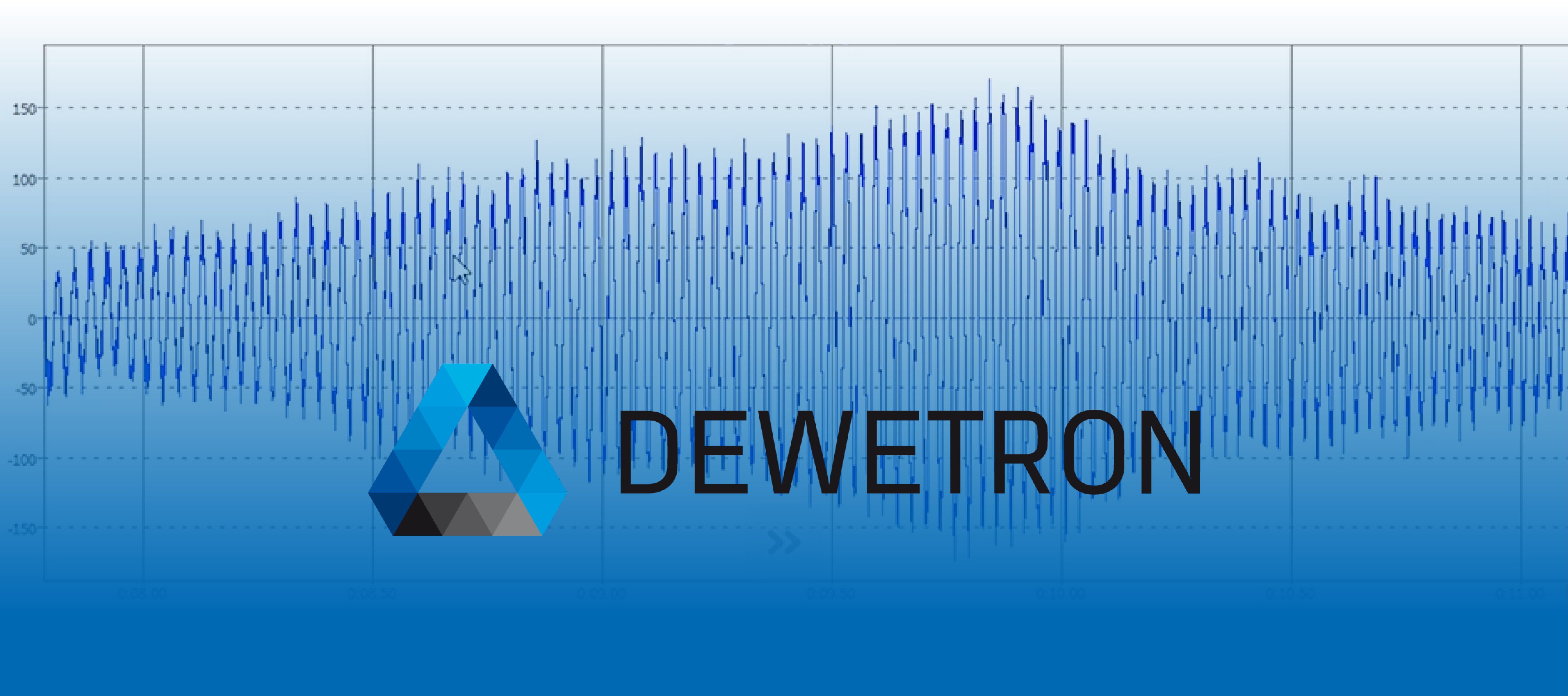An Interview about Rotational Vibration Analysis

Research and development engineers know that rotating machines – be it a powerful generator or a small motor – are critical components. If they are out of action, it might entail far-reaching consequences. Many problems that accompany rotating machines root in the presence of rotational vibration. Therefore, we asked one of our experts at DEWETRON – Christian Gether – to explain the origin of rotational vibrations. Furthermore, he agreed to elaborate on the analysis and even prepared a video.
An interview about rotational vibration analysis with Christian Gether
What is a rotational vibration?
I want to explain rotational vibration by giving an application example. Let’s think about an internal combustion engine in a car that uses for instance four cylinders. These cylinders are fired in a particular order. Consequently, the torque is distributed over two revolutions of the driveshaft. As a result, the rpm [revolutions per minute] deviate during each revolution of that particular driveshaft. This is the phenomenon we call rotational vibration.
How can we measure this type of vibration?
To measure the previously explained phenomenon, we need special hardware. Due to the nature of the problem, the sensors must be capable to capture at least several pulses per revolution. A tacho probe for instance does not meet this requirement as it typically records only one pulse per revolution. Consequently, the result would not show a deviation but only the average rpm.
DEWETRON offers several sensors for this measurement task like CDM, CDM+TRIG and encoders. Thanks to simple configurations, it is easily possible to perform such a measurement with our data acquisition and analysis software OXYGEN.
The analysis in OXYGEN
Our senior engineer recorded a video to explain the execution of a rotational vibration analysis. As previously said, he makes use of DEWETRON’s measurement software OXYGEN combined with DEWETRON’s TRION counter inputs. In the video, you will see how simple it is to measure and evaluate rotational vibration with OXYGEN.
Stay up-to-date
You embrace lifelong learning and data acquisition is a topic you are interested in? Follow us on LinkedIn to benefit from the free material we share regularly. Furthermore, you can find useful video tutorials, whitepapers and articles on our website. We are sure you will like them. Do you want to know more? Simply send us a message. Then one of our experts will get in touch with you.






